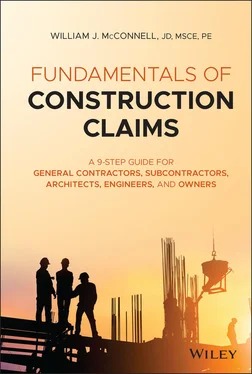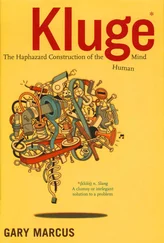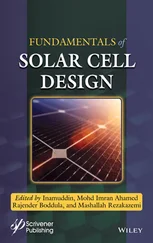1 Cover
2 Title Page Fundamentals of Construction Claims A 9-Step Guide for General Contractors, Subcontractors, Architects, Engineers, and Owners William J. McConnell JD, MSCE, PE
3 Copyright Copyright © 2022 by John Wiley & Sons, Inc. All rights reserved Published by John Wiley & Sons, Inc., Hoboken, New Jersey Published simultaneously in Canada No part of this publication may be reproduced, stored in a retrieval system, or transmitted in any form or by any means, electronic, mechanical, photocopying, recording, scanning, or otherwise, except as permitted under Section 107 or 108 of the 1976 United States Copyright Act, without either the prior written permission of the Publisher, or authorization through payment of the appropriate per-copy fee to the Copyright Clearance Center, 222 Rosewood Drive, Danvers, MA 01923, (978) 750-8400, fax (978) 646-8600, or on the web at www.copyright.com . Requests to the Publisher for permission should be addressed to the Permissions Department, John Wiley & Sons, Inc., 111 River Street, Hoboken, NJ 07030, (201) 748-6011, fax (201) 748-6008, or online at www.wiley.com/go/permissions . Limit of Liability/Disclaimer of Warranty: While the publisher and author have used their best efforts in preparing this book, they make no representations or warranties with the respect to the accuracy or completeness of the contents of this book and specifically disclaim any implied warranties of merchantability or fitness for a particular purpose. No warranty may be created or extended by sales representatives or written sales materials. The advice and strategies contained herein may not be suitable for your situation. You should consult with a professional where appropriate. Neither the publisher nor the author shall be liable for damages arising herefrom. For general information about our other products and services, please contact our Customer Care Department within the United States at (800) 762-2974, outside the United States at (317) 572-3993 or fax (317) 572-4002. Wiley publishes in a variety of print and electronic formats and by print-on-demand. Some material included with standard print versions of this book may not be included in e-books or in print-on-demand. If this book refers to media such as a CD or DVD that is not included in the version you purchased, you may download this material at http://booksupport.wiley.com . For more information about Wiley products, visit www.wiley.com . Library of Congress Cataloging-in-Publication Data applied for ISBN: 9781119679905 Cover Design: Wiley Cover Image: © lamontak590623/iStock/Getty Images
4 Acknowledgments Acknowledgments The following colleagues of mine served as technical editors for certain sections of the book: Diana Minchella, Jeffrey Katz, Andrew Sargent, and Ryan Phillips.
5 1 Introduction I. Step 1: Review the Dispute Resolution Procedure II. Step 2: Define the Type of Dispute III. Step 3: Fulfill Pre-Claim Requirements and Notice Requirements IV. Step 4: Establish Entitlement V. Step 5: Calculate Delay VI. Step 6: Calculate Damages VII. Step 7: Formatting and Packaging the Claim VIII. Step 8: Non-Binding Dispute Resolution IX. Step 9: Binding Dispute Resolution X. Other Topics XI. Summary
6 2 Step 1: Review the Dispute Resolution Procedure I. Standard Contract Forms for Owner–Contractor Agreements II. Standard Contract Forms for Contractor–Subcontractor Agreements III. Standard Contract Forms for Owner–Designer Agreements IV. Standard Purchase Order Forms for Purchaser–Vendor Agreements V. Summary Notes
7 3 Step 2: Define the Type of Dispute A. Design Issues B. Administration Issues C. Performance Issues D. Third-Party Issues E. Change Order Negotiation Issues Summary
8 4 Step 3: Fulfill Pre-Claim Requirements and Notice Requirements I. Pre-Claim Requirements II. Claim Notice Provisions
9 5 Step 4: Establish EntitlementI. Introduction II. Typical Contractor Claims Against Owners III. Typical Owner Claims Against Contractors IV. Typical Subcontractor Claims Against Contractors V. Typical Contractor Claims Against Subcontractors VI. Typical Designer Claims Against Owners VII. Typical Owner Claims Against Designers VIII. Summary Note
10 6 Step 5: Calculate Delay I. Contract Requirements for Time Extension Requests II. Scheduling Overview III. Types of Delays IV. Concurrent Delays V. Pacing Delays VI. Review of Forensic Scheduling Methodologies VII. Summary Notes
11 7 Step 6: Calculate Damages I. Methods to Calculate Damages II. Markup on Damages III. Damage Categories Notes
12 8 Step 7: Formatting and Packaging the ClaimI. Overall Claim Report Outline II. Formatting III. Writing Style and Organization
13 9 Step 8: Non-Binding Dispute ResolutionI. Introduction II. Prevailing Party Provisions III. Settlement Meetings IV. Mediation
14 10 Step 9: Binding Dispute Resolution I. Litigation II. Arbitration III. Discovery and Disclosures IV. Witness Testimony V. Deposition Testimony VI. Trial and Arbitration Testimony Note
15 11 Termination Claims I. Termination for Convenience (Owner Termination of Contractor for Convenience) II. Termination for Cause (Owner Termination of Contract with Contractor) III. Termination for Cause (Contractor Termination of Contract with Owner)
16 12 Non-Contract Claims and DefensesI. Introduction II. Non-Contract Claims III. Non-Contract Defenses to Breach of Contract Claims IV. Summary
17 13 Allocation of Damages I. Step 1 Defining the Issue in Dispute II. Step 2 Defining the Duties of the Various Parties III. Step 3 Is the Issue Patent or Latent in Nature? IV. Step 4 Was the Defective Work Covered Up by a Subsequent Trade? V. Step 5 Did a Third-Party Inspector Approve the Work? VI. Step 6 Do the Contracts have Indemnification Clauses? VII. Step 7 Identify the Responsibility of the Various Parties VIII. General Theory of Allocation Percentages
18 14 Conclusion
19 Index
20 End User License Agreement
1 Chapter 7Table 7.1 Estimate of contractor's productivityTable 7.2 Project size and fee markup (%)
2 Chapter 8Table 8.1 Formatting recommendationsTable 8.2 Hierarchy of order of outline numbering
1 Chapter 1 Figure 1.1 Dispute resolution flowchart.
2 Chapter 6Figure 6.1 Example of true concurrent delay.Figure 6.2 Example of concurrent delay.
3 Chapter 7Figure 7.1 Excerpt of contract executed between framing contractor and owner...Figure 7.2 Excerpt of unit price contract executed between contractor and ow...Figure 7.3 Excerpt of On-Screen Takeoff showing the total quantity of concre...Figure 7.4 Pricing data on bid tabs.Figure 7.5 Project costs.
1 Cover
2 Table of Contents
3 Title Page Fundamentals of Construction Claims A 9-Step Guide for General Contractors, Subcontractors, Architects, Engineers, and Owners William J. McConnell JD, MSCE, PE
4 Copyright Copyright © 2022 by John Wiley & Sons, Inc. All rights reserved Published by John Wiley & Sons, Inc., Hoboken, New Jersey Published simultaneously in Canada No part of this publication may be reproduced, stored in a retrieval system, or transmitted in any form or by any means, electronic, mechanical, photocopying, recording, scanning, or otherwise, except as permitted under Section 107 or 108 of the 1976 United States Copyright Act, without either the prior written permission of the Publisher, or authorization through payment of the appropriate per-copy fee to the Copyright Clearance Center, 222 Rosewood Drive, Danvers, MA 01923, (978) 750-8400, fax (978) 646-8600, or on the web at www.copyright.com . Requests to the Publisher for permission should be addressed to the Permissions Department, John Wiley & Sons, Inc.
Читать дальше












